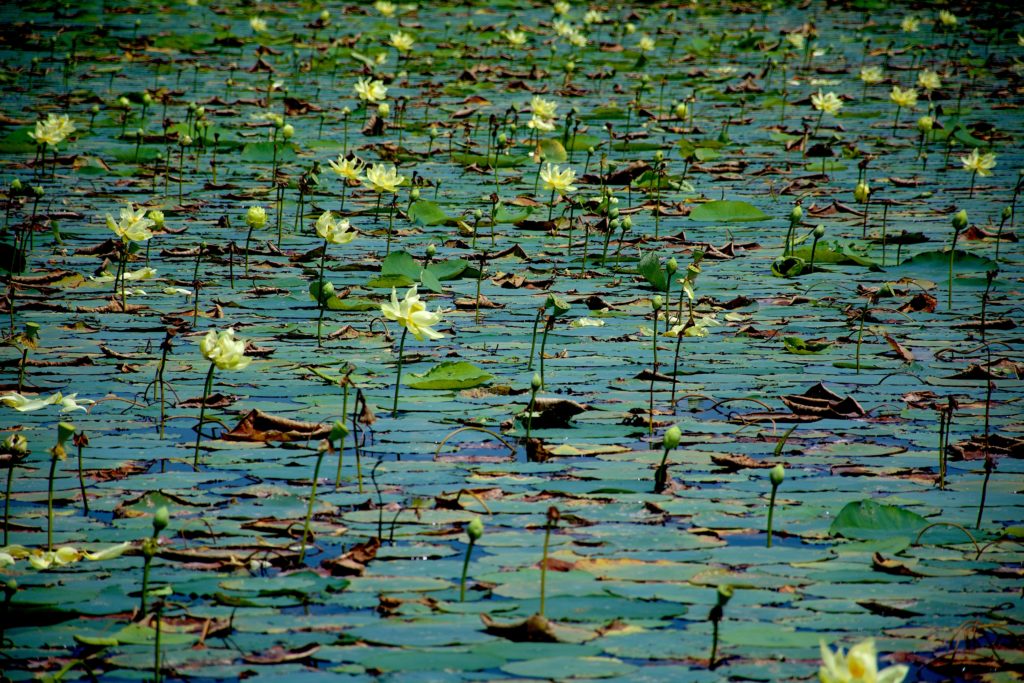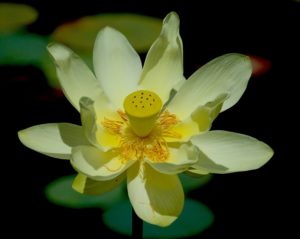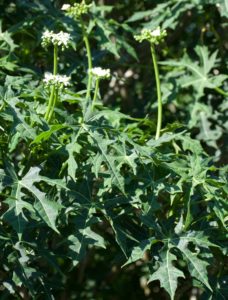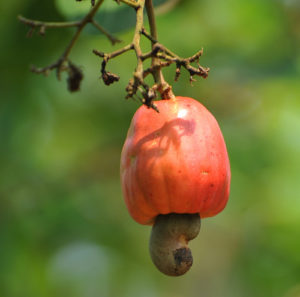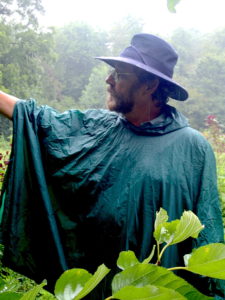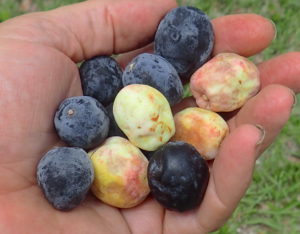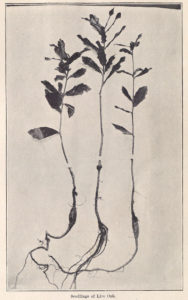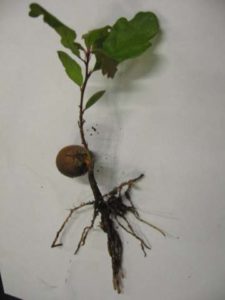It’s the time of year when lakes, ponds and some rivers turn yellow.
The beautiful American Lotus spans definitions. In some places you have to have a special permit to harvest a few. In other areas it’s nuisance species that clogs waterways. Although quite edible and offering several different edible parts, I don’t think the plant will disappear anytime soon. While the seeds are easy to harvest — if you have a raft or a canoe — the starchy roots are a different challenge. The root of a given plant is a long ways from the plant and often several feet under the bottom. If you have a lot of lotus then finding a root is not too difficult. But if you have a few plants finding the roots can be very time and energy consuming. However both the seeds and the roots are worth the effort. You can read about American Lotus here.
Spying edibles for the first time in the season is always enjoyable. Today while riding along the Seminole Wekiva (bike) Trail I first spotted red Simpson Stopper berries. The Stopper is a native shrub that has been championed for local landscaping. While it can be a stand-alone small tree its main environmental claim to fame is as a hedge plant. As it takes many plants to make a hedge one also gets staggered fruiting. And while it is not confusing to foragers botanists aren’t quite sure what family to put the Stopper in or what species to call it. It literally has had dozens of botanical names. The fruit when orange ripe tastes a little bit like orange marmalade but with a slightly bitter after taste. It makes good jelly. You can read about it here.
Also seen today is a fruit I have to restrict myself or I will just eat too many I like the flavor so much. Pindo Palms, which can grow as far north as Washington DC, have a long fruiting season. When it starts is always a bit iffy. Around Memorial Day is as good as any date. But I had not personally seen any ripe fruit this season until today. Of all the palm fruit I have ever tried Pindo is way above the rest. I am surprised it is not a commercial fruit. In fact in my capacity as a consultant for Bacardi I recommended they explore the fruit for distilling purposes. It already has a long history of being used for wine (I have three gallons at the moment.) As mentioned in previous newsletters I do not have a sweet tooth but Pindo Palm fruit is one of those delicious exceptions that I have to restrict myself with. I’m fact, on the trail today I ate 12 and was proud to have managed to stop at 12. You can read about Pindo Palms here.
This was covered earlier this year but I thought it worth another mention because the species is in heavy blossom. Chaya, a tropical American “food tree.” It is closely related to our local Spurge Nettle. As one might expect Chaya grows in the wild in tropical climates and like the Spurge Nettle stings. The sting to me is annoying but manageable. It goes away in about a hour with me so by the time I think of it a second or third time the stinging is done. The leaves are mashed and or cooked. They have a little bit of cyanide which is why cooking is recommended. Surprisingly the cooking water is safe to drink and is high in vitamin C. There are local reports that I have not followed up on that our Spurge Nettle leaves can be cooked and eaten. It’s one of those things I might try when I have a few days to be ill. You can read about Chaya here.
One of the more strange trees is the cashew. The species is closely related to poison ivy, poison oak, poison sumac, edible sumac, mangos, and pistachios. The cashew itself is an exceptionally toxic tree. The cashew “seed” is actually an enclosed nut inside an enclosed shell. It is surrounded by a toxic sap. The sap is dangerous. The process of making the seed edible is dangerous. While the end product is a tasty nut it is among the least nutritious of tree seeds. Oddly the cashew “apple” is quite edible and we saw some this past foraging class in West Palm Beach. You can read more about the cashew here.
Have a heavy teaching schedule in July. There will be a class near you. This weekend I have a class near Tarpon Springs on Sunday. Note this month there is a class in Ft. Pierce and Leesburg.
Sunday, July 2nd, John Chestnut County Park: 2200 East Lake Road, Palm Harbor, FL 34685. 9 a.m.
Saturday, July 8th, Blanchard Park, 10501 Jay Blanchard Trail, Orlando, FL 32817. 9 a.m. Meet east side of the tennis courts near the YMCA building.
Sunday, July 9th, George LeStrange Preserve, 4911 Ralls Road, Fort Pierce, FL, 34981, 9 a.m.
Saturday, July 15th, Colby-Alderman Park: 1099 Massachusetts Street, Cassadaga. Fla. 32706. 9 a.m.
Sunday July 16th, Red Bug Slough Preserve, 5200 Beneva Road, Sarasota, FL, 34233. 9 a.m.
Saturday, July 22nd, Florida State College, south campus, 11901 Beach Blvd., Jacksonville, 32246. 9 a.m.
Sunday, July 23rd, Sunday, Aug 21st., Venetian Gardens, 201 E. Dixie Ave, Leesburg, FL 34748, 9 a.m. Meet in the parking lot between the pool and the lake. (The wading birds are quite friendly so if you like to feed them and take photos it’s an opportunity.)
Saturday July 29th, Bayshore Live Oak Park, Bayshore Drive. Port Charlotte. 9 a.m. Meet by the parking lot across from Ganyard St.
Sunday, July 30th, Dreher Park, 1200 Southern Blvd., West Palm Beach, 33405, 9 a.m.
You can read more about the classes here.
Want to identify a plant? Looking for a foraging reference? Do you have a UFO, an Unidentified Flowering Object you want identified? On the Green Deane Forum we chat about foraging all year. And it’s not just about warm-weather plants or just North American flora. Many nations around the world share common weeds so there’s a lot to talk about. There’s also more than weeds. The reference section has information for foraging around the world. There are also articles on food preservation, and forgotten skills from making bows to fermenting food. One special section is “From the Frightening Mail Bag” where we learn from people’s mistakes. You can join the forum by clicking on the button on the upper right hand side of this page.
All of Green Deane’s videos available for free on You Tube. They do have ads on them so every time you watch a Green Deane video I get a quarter of one cent. Four views, one cent. Not exactly a large money-maker but it helps pays for this newsletter. If you want to see the videos without ads and some in slightly better quality you can order the DVD set. It is nine DVDs with 15 videos on each. Many people want their own copy of the videos or they have a slow service and its easier to order then to watch them on-line. They make a good gift for that forager you know. Individual DVDs can also be ordered. You can order them by clicking on the button on the top right of this page or you can go here.
This was covered a few weeks ago but seems worth a revisit. A century ago a pamphlet was published by a W.C. Coker on “The Seedlings Of The Live Oak and White Oak.” Coker referenced an article called “The Acorns And Their Germinations” by a Dr. Engelmann in Vol IV, 1880, of the Academy of Science of St. Louis. He in turn was referencing three fellows in South Carolina one of whom, William St. John Mazyck, made the original observation. Englemann wrote: “The structure of the acorns and the germination of the oaks seem to be so well-known, that I did not pay much further attention to it until my interest was excited by the information that the germination Live Oak developed little tubers, well-known to … children and greedily eaten by them….”
Essentially they write that after the acorn sprouts and sends up a young shoot the root develops a small elongated swelling that is edible. They agreed the swelling contains starch. The question they were discussing was when does the “tuber” form and how long does it last? They suspected it formed before the young shoot developed many true leaves. The swelling persists but grows woody in a few years. The “plate” in the pamphlet (above left) showed older oaks shoots but was used to show the swelling location when younger. One question was why would some species do this and the possible answer was hard times, or if you’re an oak, bad weather. The starchy swelling would help feed the seedling.
On a personal note: I have several potted Ivy Gourds if someone wants one. If you are in the Orlando area or where I will be teaching this month and want one let me know. Also it is my annual time to look for a possible rental in southwest Florida. If you know of a small house, duplex, or mother-in-law cottage that will be available this fall please let me know. Two rooms and a kitchen is fine. I can also trade handyman maintenance and landscaping.
This is issue 263
If you would like to donate to Eat The Weeds please click here.

